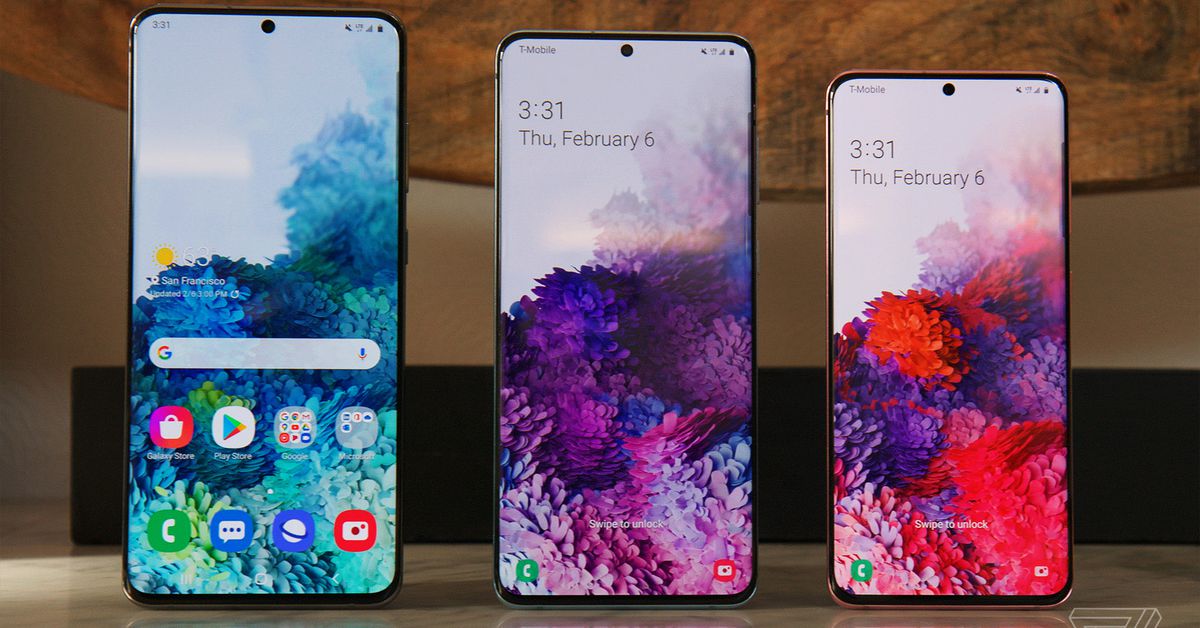
Samsung’s Galaxy S20 device lineup has become the first to receive USB certification for their support of the Programmable Power Supply (PPS) and USB Power Delivery (USB PD) 3.0 standards, the USB Implementers Forum announced today. It means that the phones should have no problem working with third-party fast chargers, so long as they’re also certified, and capable of providing the specific current and voltage required by the handset. The S20 and S20 Plus support fast charging of up to 25W, while the S20 Ultra supports up to 45W. Samsung’s Galaxy Note 10 Plus technically also supported USB PD3.0 and PPS, but it apparently didn’t receive a certification from the USB Implementers Forum.
USB PD 3.0 and PPS are a couple of new standards designed to allow phones to charge at faster speeds, as this piece by GSMArena explains. To cut a long story short, it’s not enough for a charger to just support the wattage that a phone requires, it also needs to be able to provide power at the right voltage and current. Then, both the charger and the handset need to be able to communicate the maximum they’re capable of, or else they’ll default to a lower charging rate.
For example, GSMArena reports that the Note 10 Plus charges at 45W only when a charger is able provide power at both 10V and 4.5A. However, the problem is that by default, USB PD only supports 5V, 9V, 15V, and 20V. 15V and 20V are way too much for the phone to handle, so most fast chargers would default to offering 9V at 3A, for a 27W charging rate. Using PPS, however, the phone and charger could communicate to settle on providing power at 10V. So long as the charger can also provide 4.5A of current, then it should, in theory, be able to provide 45W of charge to the phone.
That’s the theory, but at the moment actually finding chargers that support these power requirements is tricky. For the time being, if you’ve got a Note 10 Plus or Galaxy S20 Ultra and want to charge it at the maximum rate of 45W, then the best advice is to stick with Samsung’s recommended first-party charger. But, as these new technologies become more widely adopted, and the USB Implementers Forum certifies more chargers, you could soon have a lot more options.
https://news.google.com/__i/rss/rd/articles/CBMibGh0dHBzOi8vd3d3LnRoZXZlcmdlLmNvbS8yMDIwLzIvMjUvMjExNTI0NjIvc2Ftc3VuZy1nYWxheHktczIwLWZhc3QtY2hhcmdlci1jZXJ0aWZpZWQtdXNiLWltcGxpbWVudGVycy1mb3J1bdIBeWh0dHBzOi8vd3d3LnRoZXZlcmdlLmNvbS9wbGF0Zm9ybS9hbXAvMjAyMC8yLzI1LzIxMTUyNDYyL3NhbXN1bmctZ2FsYXh5LXMyMC1mYXN0LWNoYXJnZXItY2VydGlmaWVkLXVzYi1pbXBsaW1lbnRlcnMtZm9ydW0?oc=5
2020-02-25 14:19:20Z
CAIiEB3-o7l9XjCwyD5CMvKp_kgqFggEKg4IACoGCAow3O8nMMqOBjD38Ak
Tidak ada komentar:
Posting Komentar